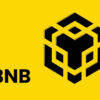
Solana is one of the fastest and most scalable blockchain platforms in the cryptocurrency ecosystem, known for its high transaction speeds and low fees. As blockchain technology evolves, addressing issues like slow transaction times and high gas fees has become crucial for widespread adoption. Solana has emerged as a leader in this area, offering a unique solution that allows for thousands of transactions per second at minimal cost. In this article, we’ll explore how Solana achieves these remarkable performance metrics through its innovative architecture and consensus mechanisms.
1. The Need for Speed and Low Fees in Blockchain
Traditional blockchain networks like Bitcoin and Ethereum, while groundbreaking, face significant challenges in scalability. As more users and applications join these networks, they become congested, leading to higher transaction fees and slower processing times. Ethereum, for example, has become notorious for high gas fees during periods of network congestion, making it difficult for users to interact with decentralized applications (dApps) affordably.
This is where Solana steps in. With its ability to process up to 65,000 transactions per second (TPS) and average transaction costs as low as $0.00025, Solana offers a more scalable, affordable solution for developers and users. Let’s dive into the key technologies and mechanisms that make this possible.
2. Proof of History (PoH): Solana’s Innovation for Speed
At the core of Solana’s impressive speed is its Proof of History (PoH) mechanism, a novel approach to transaction validation. In traditional blockchains, validators must reach consensus on the order and timestamp of each transaction, which can slow down the process as validators need to communicate with one another constantly.
Proof of History solves this by introducing a cryptographic timestamp for each transaction before it is added to the blockchain. This timestamp acts as a verifiable sequence of events, allowing validators to process transactions without needing to coordinate with each other on the exact order of events.
Benefits of PoH include:
- Faster Consensus: Validators don’t have to waste time agreeing on the transaction order, allowing transactions to be processed more quickly.
- Scalability: Since PoH reduces the time required for validation, it enables the network to handle more transactions per second.
3. Tower BFT: Fast and Secure Consensus
Solana’s Tower Byzantine Fault Tolerance (BFT) is another key component of its high-speed network. Tower BFT is a variation of the traditional Byzantine Fault Tolerance (BFT) consensus algorithm, designed to work in tandem with PoH. It leverages the cryptographic timestamps from PoH to reach consensus more quickly, without needing to engage in extensive communication between validators.
The benefits of Tower BFT include:
- Reduced Latency: Tower BFT minimizes the time it takes to achieve consensus, leading to near-instant transaction confirmation.
- Increased Security: By combining fast consensus with PoH’s immutable timestamping, Solana can maintain a high level of security while processing transactions rapidly.
4. Sealevel: Parallel Transaction Processing
Another feature that sets Solana apart from other blockchains is its ability to handle parallel transaction processing. Most blockchains process transactions sequentially, which can create bottlenecks when the network is congested.
Solana’s Sealevel technology allows it to execute thousands of smart contracts simultaneously across the network. By processing multiple transactions in parallel, Solana avoids congestion and ensures that the network can maintain high throughput, even during peak demand.
The benefits of Sealevel include:
- Higher Throughput: Parallel processing enables Solana to handle a significantly higher volume of transactions than sequential-processing blockchains.
- Efficient Resource Usage: Sealevel optimizes the use of hardware and network resources, ensuring that Solana can scale without sacrificing performance.
5. Gulf Stream: Eliminating Mempools for Faster Confirmation
Solana eliminates the need for a mempool—where unconfirmed transactions are typically stored—through its Gulf Stream technology. In traditional blockchains like Ethereum, transactions sit in the mempool until they are picked up and validated by miners or validators, which can delay the confirmation process.
Gulf Stream allows Solana validators to forward transactions to the next block producer before the current block is fully confirmed. This “mempool-less” design reduces latency and speeds up transaction finality.
The benefits of Gulf Stream include:
- Instant Confirmation: Transactions can be validated almost immediately, reducing wait times for users.
- Improved Network Efficiency: By eliminating the mempool, Solana avoids delays caused by waiting for transactions to be picked up by validators.
6. Turbine: Efficient Data Propagation
Solana’s Turbine protocol is designed to optimize block propagation, ensuring that data is efficiently distributed across the network. In a large and decentralized network, it’s essential to ensure that all validators receive transaction data quickly and reliably, especially when the network is handling thousands of transactions per second.
Turbine works by breaking data into smaller chunks and distributing it across nodes in the network, similar to how BitTorrent shares large files. This ensures that data reaches validators quickly and reduces the risk of delays or congestion.
The benefits of Turbine include:
- Reduced Bandwidth: By breaking data into smaller pieces, Turbine minimizes the bandwidth required for transaction propagation.
- Faster Data Transmission: Validators receive transaction data more quickly, enabling them to process and confirm transactions faster.
7. Low Fees: How Solana Keeps Costs Down
In addition to its fast transaction speeds, Solana is known for its exceptionally low transaction fees. On average, Solana users pay around $0.00025 per transaction, a stark contrast to Ethereum’s often high gas fees. Solana achieves these low costs through its efficient architecture and consensus mechanisms, which reduce the computational and energy resources needed to process transactions.
Key factors contributing to Solana’s low fees include:
- Proof of Stake (PoS): Solana’s use of the Proof of Stake (PoS) consensus mechanism is more energy-efficient than the Proof of Work (PoW) used by networks like Bitcoin. PoS requires less computational power, leading to lower operational costs.
- Efficient Resource Utilization: Solana’s ability to process transactions in parallel (Sealevel) and forward them efficiently (Gulf Stream) reduces the overall load on the network, keeping transaction fees low.
8. Benefits of Solana’s High Speeds and Low Fees
The combination of high transaction speeds and low fees makes Solana a popular choice for developers and users alike. Some of the major benefits include:
- Decentralized Finance (DeFi): Solana’s high throughput and low costs make it ideal for DeFi applications, where rapid transaction processing and affordable fees are critical.
- Non-Fungible Tokens (NFTs): Solana’s scalability and low fees have also made it a popular platform for NFT marketplaces, allowing users to mint, buy, and sell NFTs without paying exorbitant gas fees.
- Decentralized Applications (dApps): Developers can build dApps on Solana that offer a seamless user experience, with fast transaction times and minimal costs, attracting more users to the platform.
Conclusion
Solana has quickly become one of the most promising blockchain platforms, offering unparalleled transaction speeds and minimal fees. Through its innovative use of Proof of History, Tower BFT, Sealevel, and Gulf Stream, Solana is capable of processing thousands of transactions per second while keeping costs low. This combination of speed, efficiency, and affordability positions Solana as a leading blockchain for the future of decentralized applications, DeFi, and NFTs.
As blockchain technology continues to evolve, Solana’s commitment to scalability and cost-effectiveness makes it a strong contender for widespread adoption across various industries.










